by Wine Owners
Posted on 2017-05-24
With the 2015 Burgundies arriving in the market these days and with more to come over the next period the market is showing mixed signals - some of continued excessive demand and some spell disaster for lesser producers trying to claim high prices.
The prices of the 2015 vintage
The price development for the 2015s shows a rather mixed picture at the primary level - some producers have showed great restraint and have in some cases kept the prices at 2014 level, whereas moderate increases have been seen even amongst the top producers in very high demand.
A lot of Burgundy producers are aware of the dangers of high prices even on village level, as these wines are now becoming very expensive in restaurants. If they want to maintain a good representation in restaurants the prices for a village level wine are near the limit - aside from the producers in extremely high demand.
Other producers seem not very aware of these dangers and have increased the 2015 prices by more than 20% - and while this may be viable in the very short run - I have talked to several wine bars and restaurants that have cut allocations already, and many will do so after the 2015 vintage. This will perhaps not have a huge effect on the 2016 vintage as the quantities are very small in some cases .. but in the long run some producers have priced themselves out of the market so to speak.
The 2016 vintage - what to expect
I have tasted some 2016s already and there are plenty of reasons to be optimistic, as quality looks very fine indeed. The wines are cooler than the 2015s, and in that way more classic. It's still too early to be very firm on the quality - but potentially a quite outstanding vintage - very well balanced and enjoyable for both the reds and the whites.
The quantities are very low due to the April frost, but also very uneven across the producers and appellations. My expectation would be that the low quantity will ensure a continued upward pressure on prices for the wines in demand, but the tendency could be trouble ahead for increases in prices for the wines with no real demand in the secondary market.
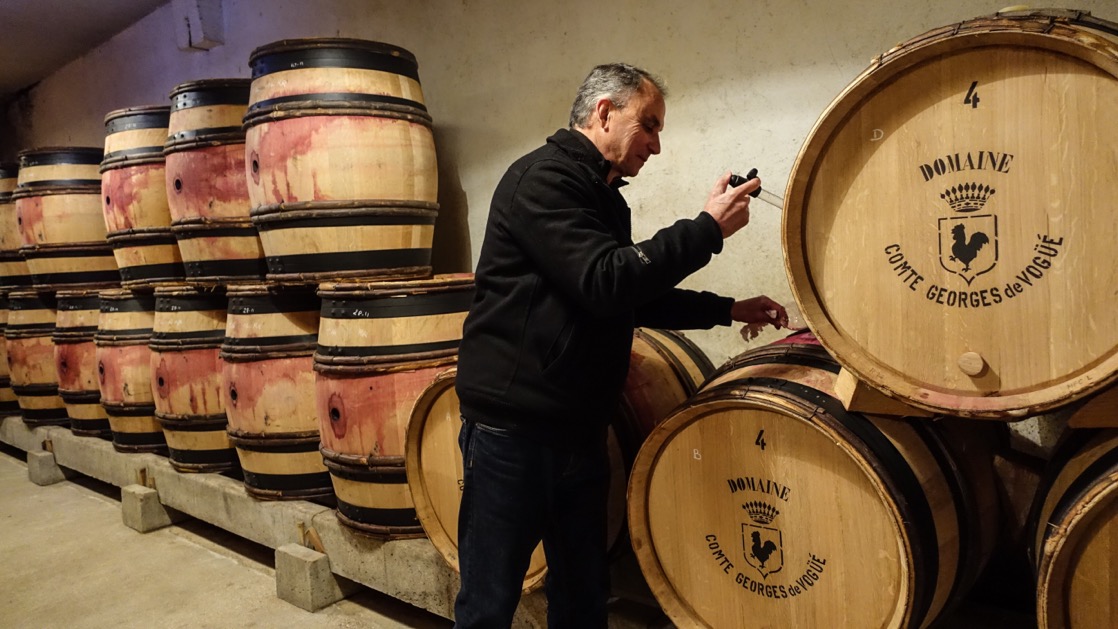
Francois Millet, Domaine Comte Georges de Vogüé - Picture: http://winehog.org/
The long-term effect of prices
In my view, we will see continued increases in prices on the wines in very high demand - i.e. wines getting high prices in the secondary market thus ensuring a margin for those who buy the wines in the primary market.
These wines will still be in demand, as many people will keep allocations as it's a good investment, but larger share will eventually end up in the secondary market. Some of these wines are now priced beyond the limits of the average quite well off consumer, and will be traded accordingly. Restaurants will do the same, and as it becomes more difficult to sell the wines at the tables - they will also cash-in offering wines on the secondary market.
The wines not in demand in the secondary market will eventually have problems, as consumers will cut allocations and move on to other products.
This is where Bordeaux was 15 - 20 years ago, and while the top Bordeaux wines have managed to increase prices the lesser wines from Bordeaux are struggling with low demand and low prices even though quality and the value of these wines often can be tremendous these days.
Take a look at the wine lists of today and note how limited the Bordeaux offerings often are these days - compared to 20 years ago.
Burgundy will prevail but demand will be more volatile
With the small quantities produced in Burgundy the risk of a full meltdown is not imminent even with the latest increases in prices. Some producers will struggle as they will be caught between the need or urge to increase prices and the restrain shown by some of the top estates regarding the prices on the low-level wines.
A good negociant will be facing the fact that their Vosne village will cost the same as the wines from a top end producer in the primary market. That is not sustainable in the long run - and these producers could well see a collapsing demand within a few years.
As prices go up I expect demand to be more volatile, as the focus on the great vintages will increase. This has happened in Bordeaux and with the globalisation and available price information around the clock this will also be the case with Burgundy.
So, I expect increasing and more volatile prices for the wines in demand, and a sluggish market for the producers with high prices without a good demand from the secondary market.
The calculative consumer
As the prices increase the consumers will be more calculative and look at the historic prices and the development in the prices and availability of back vintages. Is it the right time to buy, can the same wine in an equally good back-vintage be found on the market at a lower cost.
The conscious consumer will check these things, and will search for information, to ensure a good price and ensure a good investment, even though the wine is bought for pure pleasure. Importantly consistency in the prices seen in relation to back vintages will be needed at least for wines produced in relatively large quantities.
This will increase the focus on services that offer historic data on prices and the possibility to validate and research the “true” market price.
The rising stars will emerge and shine brightly
Furthermore, we will see new talented producers pop up - and become in fashion within a very short time - and achieve high demand for these wines in the secondary market very rapidly as the producers get the acclaim from the wine press. So, exciting times where buyers and investors must be on their toes to follow the trends in Burgundy.
As a wine writer, it's exciting times in Burgundy as new talents emerge all the time, and old somewhat lacklustre estates are transformed to a new star within a few years with the arrival of a new generation.
So, stay on your toes, stay tuned in and informed on winehog.org - a yearly subscription is only 29€ - sign up here
Steen Öhman
Chief Tasting Officer
Winehog.org
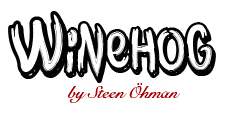
NB:
The team at Wine Owners love Steen’s Burgundy reviews. Just like us, he was an impassioned collector, until he decided to pack in his day job and apply his palate to Burgundy for the good of mankind (and perhaps to gain a little personal enlightenment along the way).
An annual subscription with https://Winehog.org is a bit of a bargain; plus the reviews are accessible, and when we taste the wines that Steen’s tasted, we ‘get it’. Furthermore he’s a real discoverer, so if you're the sort of collector who loves the idea of buying into the next young Burgundy buck before the rest of the world catches on and spoils the price, you really should subscribe!
by Wine Owners
Posted on 2017-01-30
This report is written on the back of 3 days of tasting cask samples and back vintages chez producers in Burgundy, hot on the heels of the London tastings.
We visited 13 small producers and tasted well over 100 wines in cellars, tasting rooms and producers’ homes, evenly split between the Cote de Nuits and Cote de Beaune.
The London en primeur tastings showed open wines with plenty of fruit. Those that were bursting with energy stood out, with some showing somewhat mute: a little flat or lacking in definition. Such are the challenges of transporting samples directly from barrel and expecting them to perform. Sometimes they do, often they don’t.
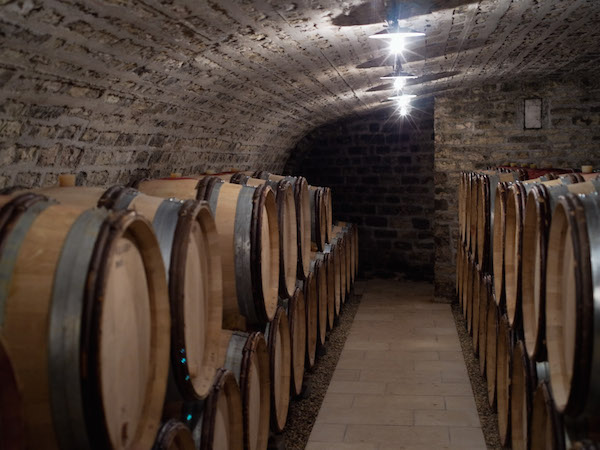
Barrel tastings in situ are a much better opportunity to judge wines individually and form a view on the vintage overall. Unsurprisingly the wines showed much more consistently than they had done in London.
If you can taste alongside prior vintages, as we did on a few occasions, that’s all the better as it provides useful context.
Comparisons have been drawn with previous vintages by commentators, notably 2005 and 2009 (presumably due to the hot summers they all have in common).
The producers don’t agree. 2009s show in a bigger, atypical mould. 2005s are considerably more tannic, built for the very long term, and most will need a good while yet. A few producers see 2005 as the greatest vintage of their generation, but many more look to 1999 as their benchmark.
2015 has the fruit and accessibility of 2012, with more volume and structure, and seemingly similar PHs. It’s an alluring vintage without the generally slacker character of 2009. Most of the successes were picked early, before the rains on 10th September. But some held off and still produced lovely wine. Others who harvested after the 10th have wines that seem to me to be too sweet, perceptibly lower in acidity and have less fine tannins. For the majority that were successful, the watchword was very little or no punching down, almost everyone opting for gentle extractions.
Some producers went for a high proportion of whole bunch fermentation. Those practising the inclusion of whole bunches do so to add an extra sense of freshness and complexity. It’s worth pointing out that stems actually slightly increase the PH, so lowering acidity in the finished wine. But they also contribute different, plant-derived flavours such as eucalyptus and mint, and it’s possibly this that gives the impression of making the wine feel light-footed. Perhaps the marginal lowering of acidity also contributes to a silkier mouth feel. Theoretically whole bunches also add a bit of structure, but I’d guess it depends on what percentage is used and often you don’t sense it.
Having tasted plenty of wines with and without whole bunches, it does seem that a common aspect of the vintage character is the silkiness of the tannins that are present irrespective of these types of winemaking decisions.

Another facet of 2015 is its lovely concentration. Pinot Noir excels in vintages that aren’t bountiful. Yields in 2015 were generally lower than in 2014, 1990 or 1999. This was especially true of the Cote de Beaune because the vines hadn’t fully recovered from the stressing effects of hail in the preceding years.
2015s are fruity, rich, with good density and show definition. On balance I personally preferred cooler sites – due to location, aspect or being in a windy spot. But others will favour out-and-out richness and a broad-shouldered character from the warmer sites. We all have our palate preferences and that’s as it should be. In any case there are no universal rules to successful buying in 2015 since the different vineyard characters shine through.
The greatest relative successes are the lesser appellations. There are some truly superb Bourgogne rouge and village level wines. You’d be seriously missing out if you just focus on trophy wines.
Village wines in 2015 are priced similarly to the levels of Premier Crus from just 2 vintages ago. Grand Crus are up by a third in many cases. If you go long on 2015 now and choose to rationalise in a few years’ time, there are no guarantees that you’ll get your money back.
If you ask which were my favourite communes in 2015 that especially shone, I’d plump for Pommard, Aloxe-Corton, Chambolle-Musigny, Morey-St-Denis and Gevrey-Chambertin.
Nevertheless, I was delighted by lovely wines from Auxey-Duresses, Santenay and Volnay. I thought Nuits-St-Georges and Vosne-Romanée were stunning successes in 2014, and it was no surprise that they showed at least as superbly in 2015.
By now you’ll have formed the impression that 2015 is a great vintage across-the board. Indeed it is. Yet not everyone is happy.
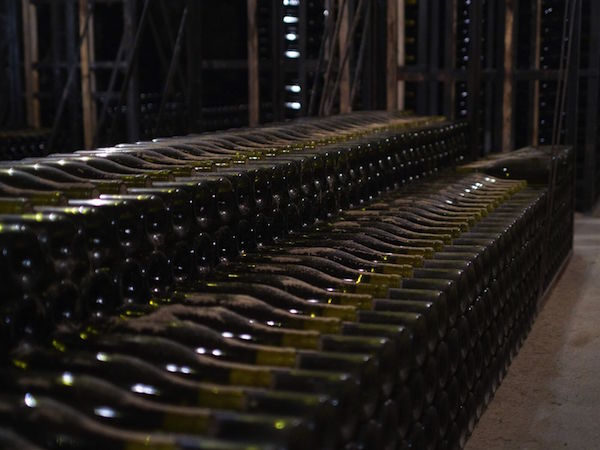
A proportion of long-term collectors are refusing their allocations this year for the first time, which may tell us something about the sustainability of these levels. Some of those ‘given up’ allocations are going to overseas buyers who spend vast annual sums with the big London merchants. But Burgundy producers are well aware of the grey market of en primeur releases originating out of the UK. For now, they are tolerant of it, but for how much longer?
Many merchants are concentrating allocations in the hands of their wealthiest buyers who spend by far the most throughout the rest of the year. And when I say spend, I mean spend. Their dependence on wine investors or wine accumulators makes it harder for them to allocate widely, and correspondingly difficult for Burgundy lovers to gain access to many Grand Crus and Premier Crus. In that fundamental sense the market has changed out of all proportion.
Overall takings at the 2016 annual Hospices auction were down 25% on the previous year (although it’s worth remembering the historic 2015 auction record was in aid of the Paris victims of the IS-inspired atrocities). There is less of 2016 to go around due to the catastrophic late April frosts from the tip to almost the toe of the Cote D’Or, but the quality of what was made is very good and it’s another warm vintage.
If you’re UK based, one other thing to consider is that the Sterling Euro exchange rate will be volatile over the next couple of years, and many will be betting against the Euro during this timeframe. Presidential election results in France in 2017 could have a major impact on the Euro’s relative strength or weakness.
With this in mind, and given the extremely high release prices in the UK for 2015 Burgundy, it’s worth revisiting 2014 for all those who held back.
With a few months or more in bottle, the red wines are showing superbly, with dark, ripe fruit, excellent minerality and sufficient structure to assure medium to longer term drinking.
2014 is a good vintage. It’s a more classic red Burgundy vintage than 2015, majoring on its lovely balance. Based on these tastings, I am delighted to have bought so much of it.
2014 white wines have wonderful intensity, and though enjoyable for their terrific concentration already, are going to age beautifully. I’ll be laying down my best bottles for 15 or more years, but will surely be tempted to dip in regularly along the way.
2013 was plagued by miserable weather. Producers needed to battle the elements, along with mildew and rot. They had to work assiduously all the way through. Perhaps because of this the best producers are proud of their achievements. Reds 'pinottent', that is to say they show fine, overt varietal expression in a really fresh, lifted mid-weight style, with one proviso: just so long as vineyard husbandry was top notch the wines were able to draw energy from the life of the soil and yields were managed to concentrate the berries.
2013 reds may be mid-weight, but the best have a lovely ethereal intensity, and village wines are starting to drink already; they have none of the hardness and excoriating acidity of 1996, or the sharpness of 2006. Tasted 2 years ago as barrel samples 2013s were particularly taciturn, rather dry and mute, as you might imagine the product of such filthy weather. Today they are transformed.
However much the 2015 white wines are being talked up as being fresher than one could have imagined given the heat of the year (and they are), they are simply not in the same class as 2014. They lack the same degree of definition, intensity and breeding with which that vintage is blessed.
With prices increasing for whites too, there’s really very little reason to go long on them this year, and it’s noticeable that recent merchant emails contain a lot more white wines still on offer compared with the mostly sold-out reds. I’ve only bought a few affordable cases for nearer term drinking, and thought the best vineyard sites of Mercurey in the Cote Challonaise showed particularly well. But I’ll be drinking them well before my 2014s.
As a parting footnote, don't overlook Moulin-a-vent in the Beaujolais. From the red granite soils of the appellation’s best terroirs and in the able hands of top Cote D’Or producers, Gamay shows what it can create: truly a noble grape.
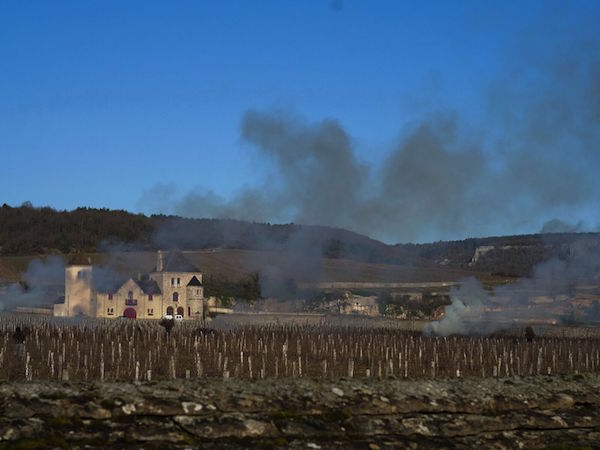
by Wine Owners
Posted on 2017-01-06
With the highly touted 2015 Burgundy campaign upon us, we can be sure of two things: it is a superb vintage, and prices will rise.
Let’s be honest, Burgundy is for wine lovers. Although we may have more Bordeaux in our cellars - steady, consistent, blended excellence - it is fickle, flirtatious Burgundy which steals our hearts. And the whole world is now falling in love with Burgundy, courting the tiny quantities and ready to take our place in the queue.
The pure, ripe fruit of the 2015s will tempt early drinking, but if we want to experience the extraordinary range of flavours, textures and sensations that fine burgundy can produce, we must be prepared to wait. Or to seek out mature wines from great producers in other vintages. Remember, in Burgundy more than anywhere, it is the producer who matters more than First floor or the year.
So rather than bet the whole house on the latest vintage, now might be the time to review the Burgundies that your fellow collectors have offered for sale on the fine wine exchange.
There is a dazzling range of beautiful wines available, from the most humble appellations to the greatest of Grand Crus. Some are for drinking now, others for keeping for the future, whatever that may bring. Some are in bond and some are duty paid, but DP prices are never more than their In Bond case equivalents and there is no VAT for exchange buyers. All were bought when the pound was much stronger and prices were lower. Prices of Burgundy’s back vintages may never be this low again.
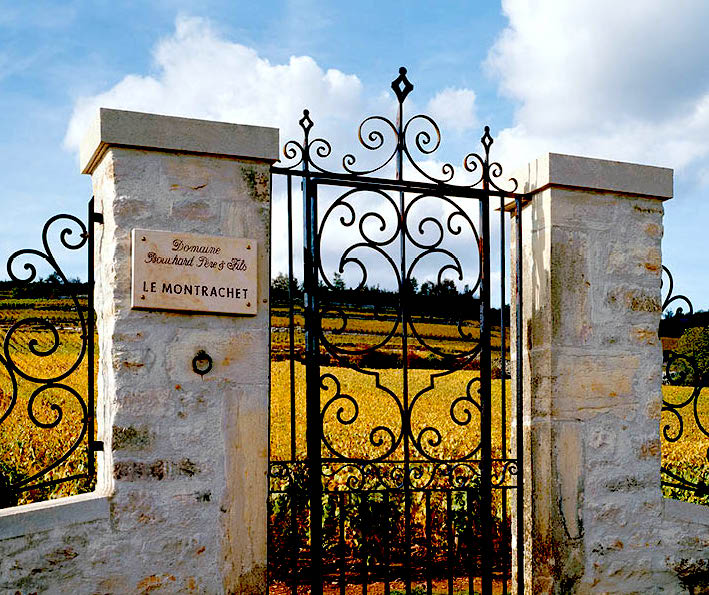
So where would you start?
Chardonnay is arguably easier to enjoy across the board in youth than Pinot Noir. 2014 whites have greater precision and zest than their 2015 counterparts and it is probably the best vintage since 2001. 2014s are only just starting to appear as offers for sale on the secondary market and they are unquestionably worth having in any cellar.
As long as yields of this naturally exuberant varietal are constrained, there is plenty to pick from: 2013, 2012, 2010, 2007 were all very good, whilst there are some terrific 2006s with nerve and energy, in contrast to lush and giving 2008s. Very late malolactic fermentations in 2001 lent plenty of substance to the best wines; they had longer to feed off their nourishing lees. When looking at 2005 and earlier fears of premature oxidation (premox) have really hurt the market. But there are still old bones that are simply thrilling.
Looking to red Burgundy, consider 2005 - considered one of the great vintages and should make fine old bones, but there's tannins aplenty, some more puckering than others depending on extraction, that suggests another 10-20 years will be required. Indeed they may be drinking in the same window as 2015 or later!
Consider 2010, a vintage with the nerve and intensity of 2008 married to the flesh of a vintage like 1995.
If you want to buy into a vintage that was overlooked when released but that has evolved into one of the most exciting we’ve tasted look to 2002, a lesson if ever there was one in how pinot noir loves luminosity more than heat. These are wines with fine intensity and great purity.
Talking of which, if you’re a classicist and enjoy form over flattery, 2001 is starting to climb the upward slope of maturity with wines that are sappy and crystalline but may have yet to reach their peaks.
The truly great 1999s are lusciously fleshy, sweetly spiced and dense, but at the same time so coiled, that most Grand Crus will surely need another 5-10 years. Many premier crus and village wine are gorgeous now.
2012 is a successful recent vintage that had really low yields (a very good thing for Pinot Noir) but will be cheaper than 2015. Producers love 2012 thanks to their fabulous balance and flattering ripe fruit, which nonetheless blankets an underlying structure for mid term appreciation.
The top tips for 2015s (whatever we say, we know you’ll want to buy some!) are that the lesser appellations, cooler climates and colder soils will excel. You don't need to stretch to the top of the tree to find great Pinot Noir in 2015 to drink over the next 15 years, which is great news for Burgundy lovers and something to be thankful for in a very expensive vintage.
Buying back vintages vs new releases
Other than exceptionally hard to find Grand Crus and Holy Grail producers’ best wines – that you’re either allocated or you’re not – it’s worth looking to premier crus from producers with good reputations for quality and value-hunting.
Take Beaune Grèves L’Enfant Jésus from Bouchard Père et Fils. Whilst back vintages were much cheaper at release than they are today, there isn’t much between the release price of 2015 or any number of superb back vintages.
As the chart below shows, the superb 1999 vintage is still cheaper today than the release price of 2015, the equally acclaimed 2010 is the same price, but you can drink it in 10 years instead of having to wait until the 2030s for the 2015; and only the 2005 and 2002 are a little more expensive – but not hideously so.

